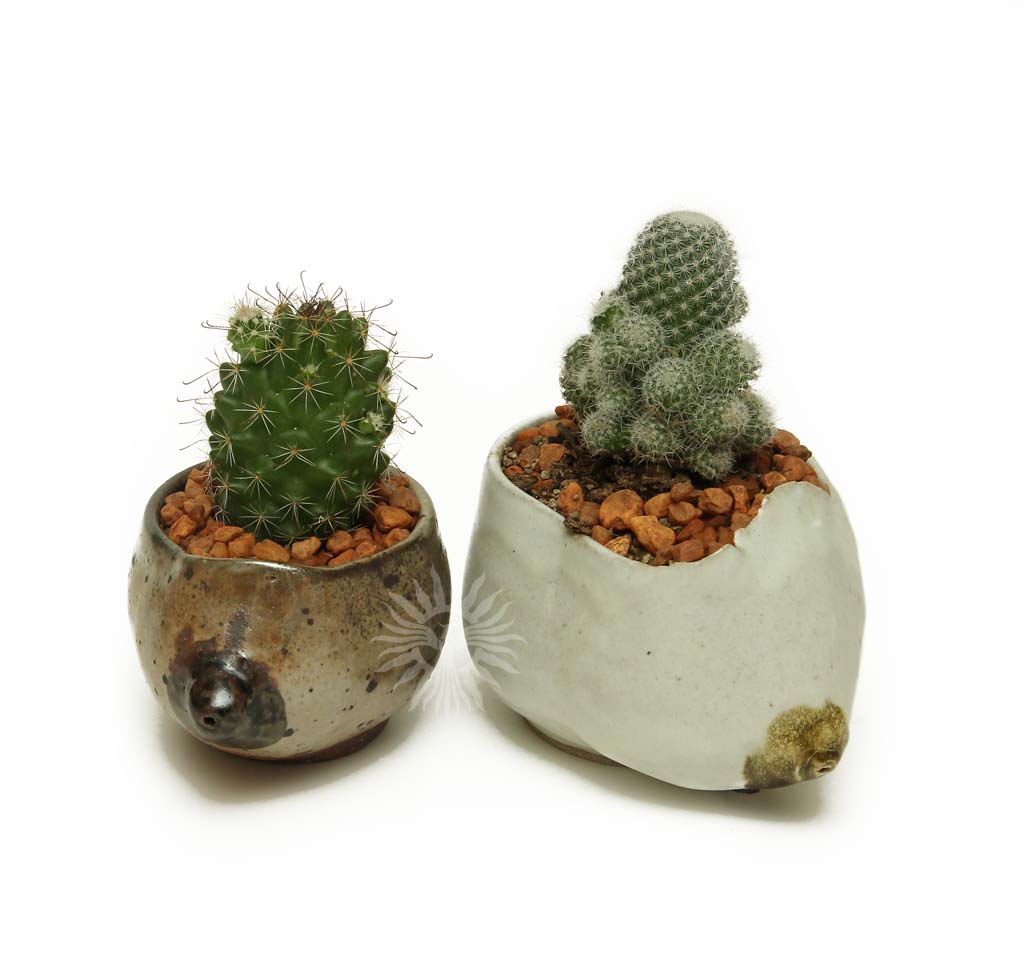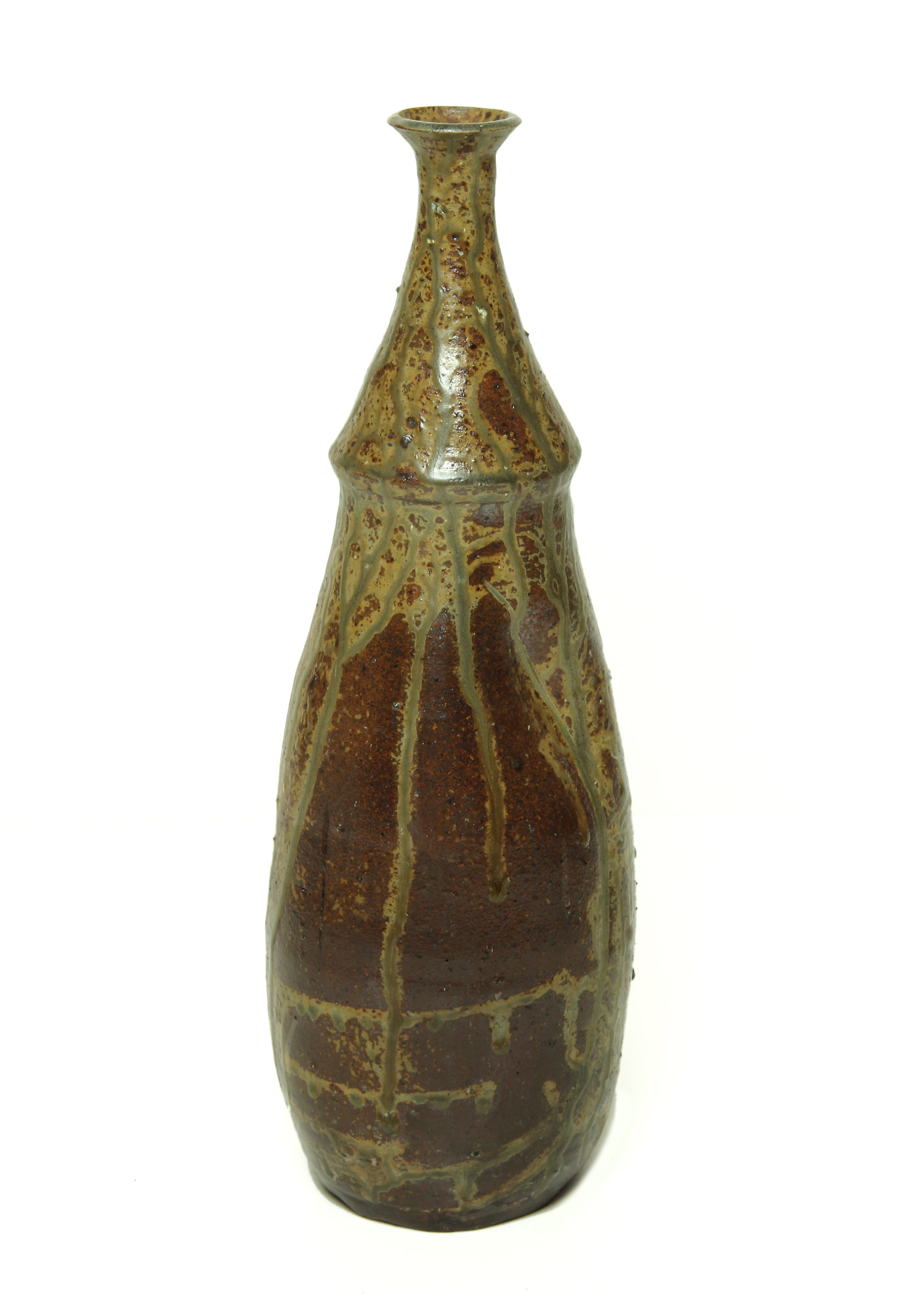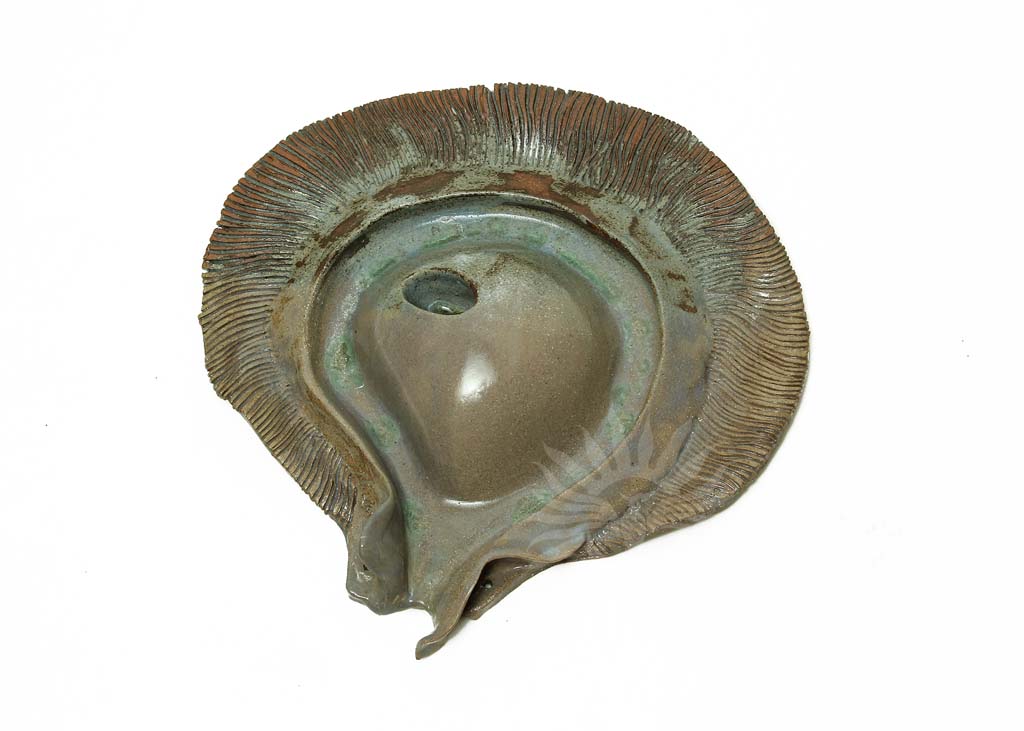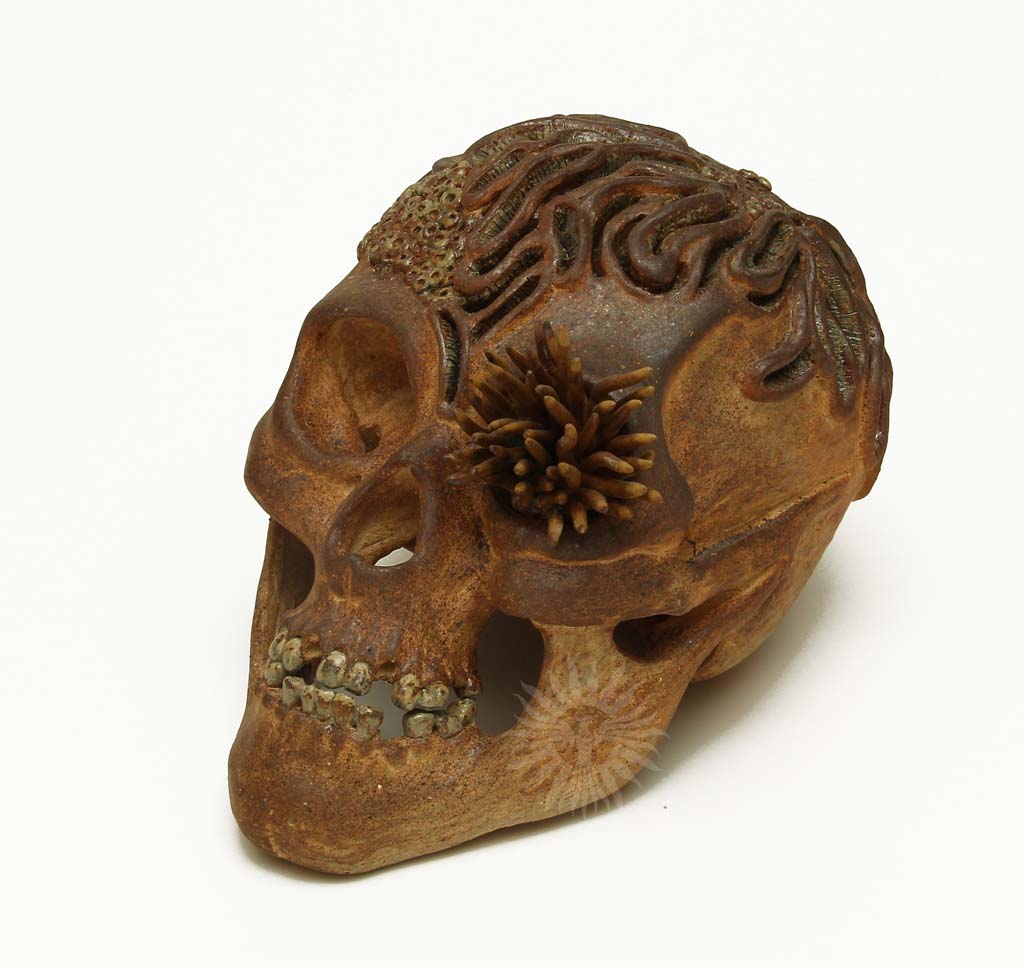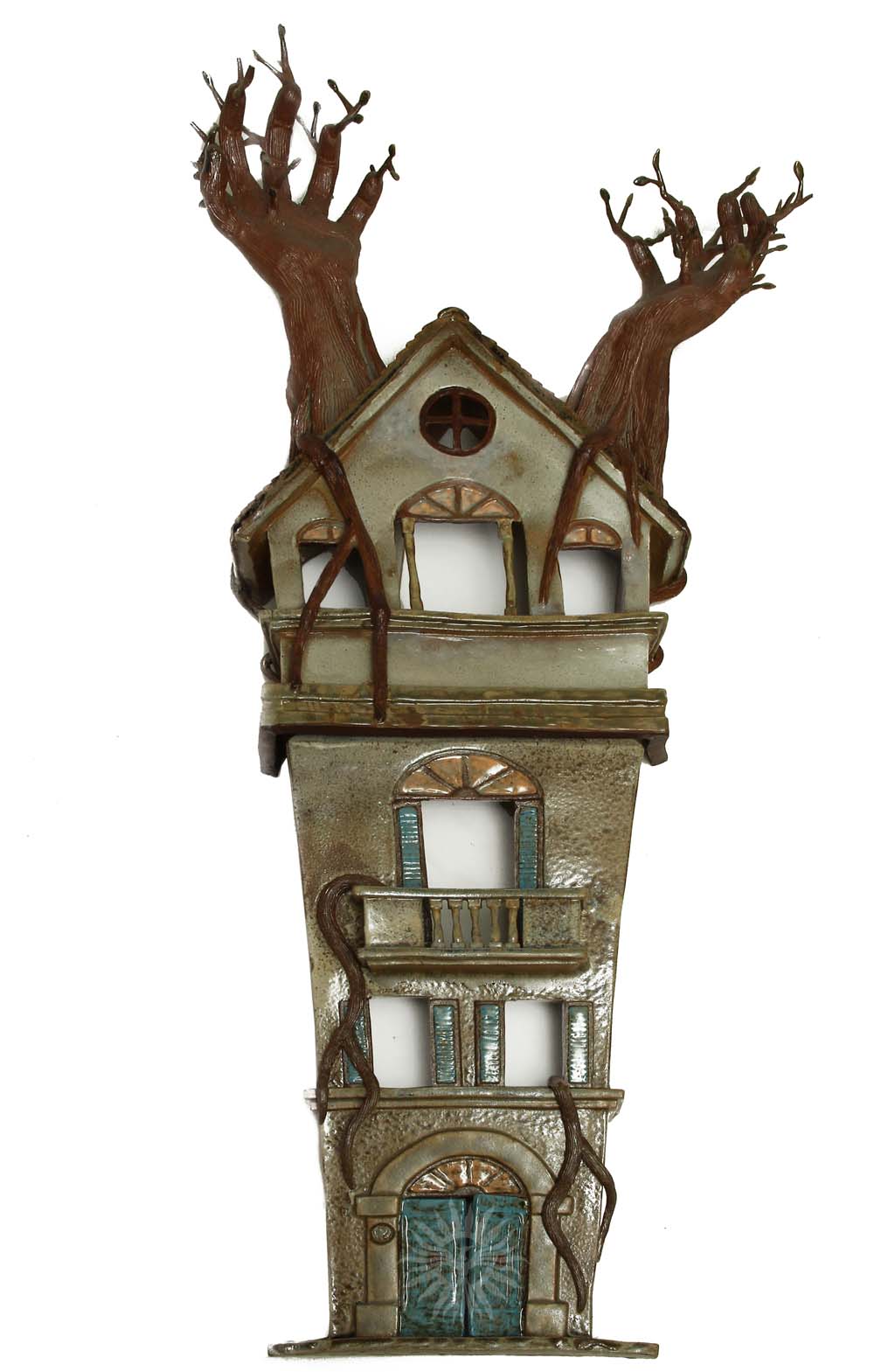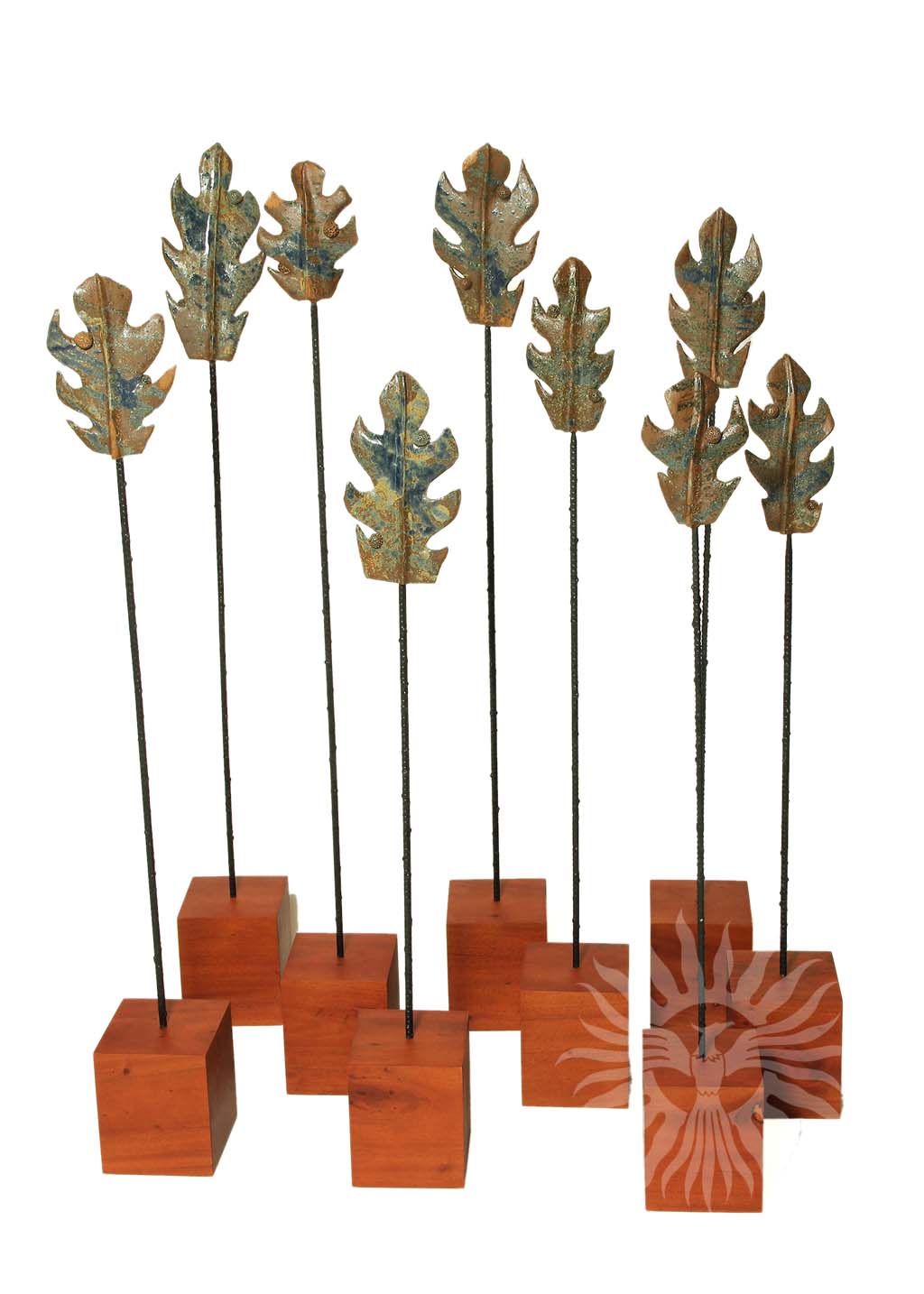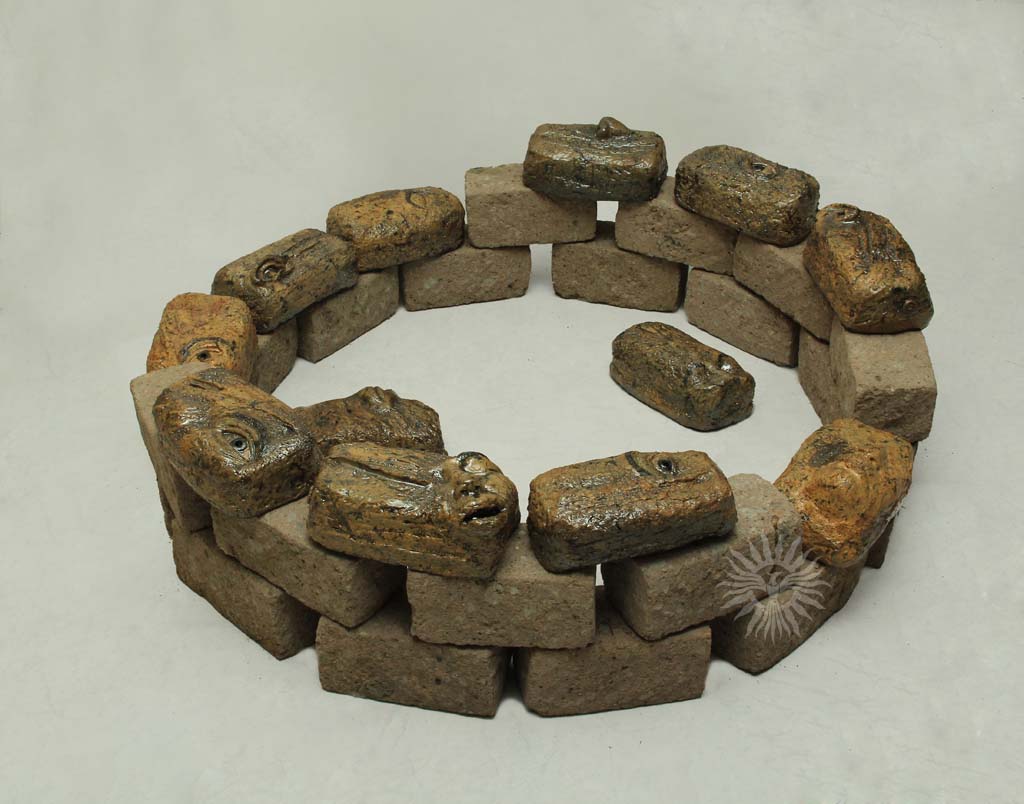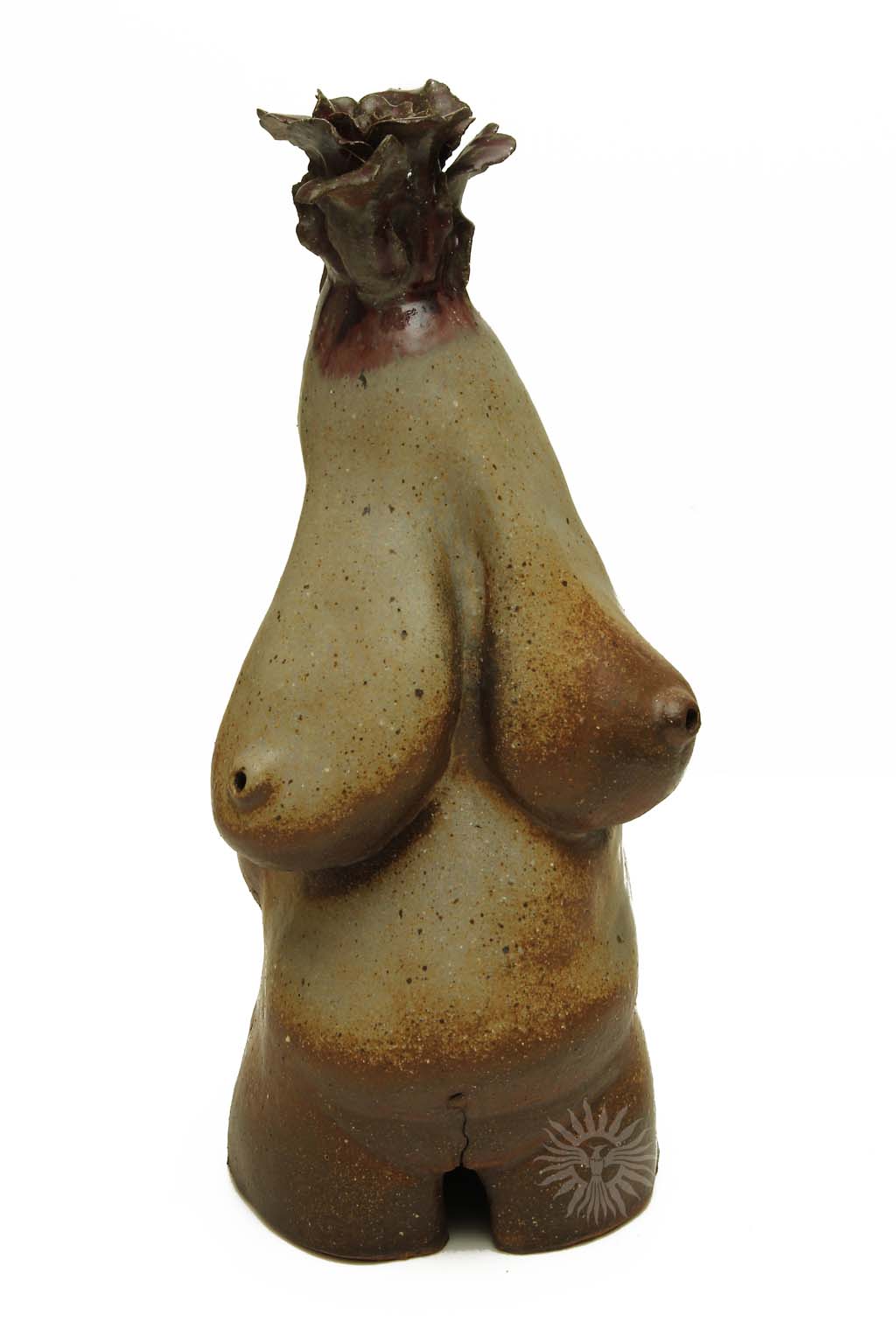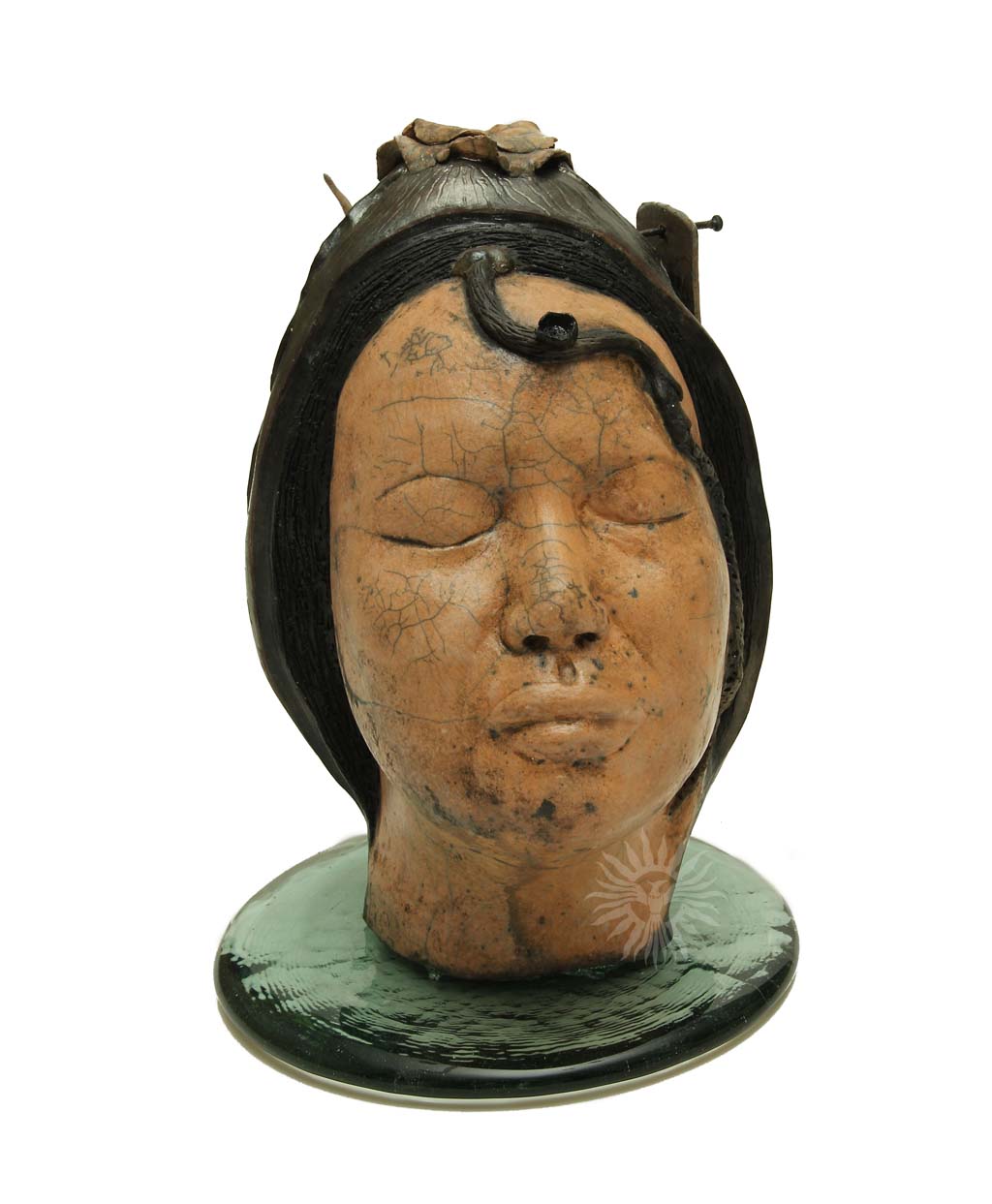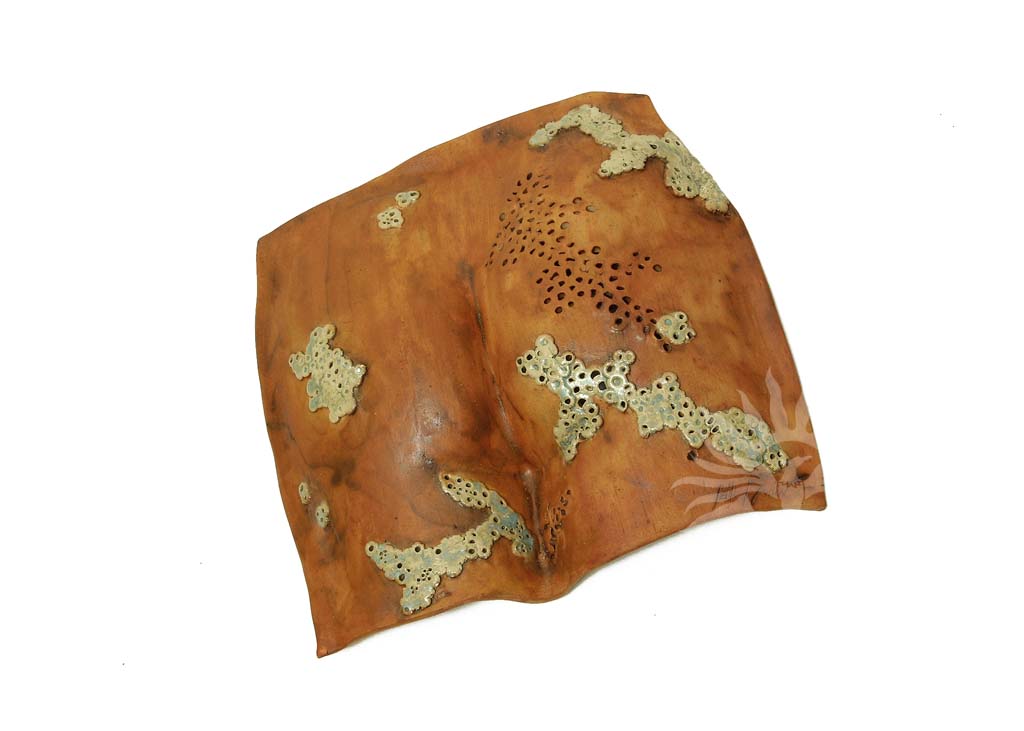Simbuyo at Iba pang mga Kuwento
May 6, 2017 - May 20, 2017
Rita Gudiño
Makati Shangri-La, Manila
Rita Gudiño: House on the Run
Rita Gudiño dwells on the house as an intimate architecture that shapes the self and stirs up a life. The artist marks it as more than just structure though; it is akin to fabric that shelters the body, only that in her creative instinct, it is earth that is the vessel, fired and glazed and imagined in the process of morphing. In many ways, the suite of stoneware forms in Simbuyo at Iba pang mga Kuwento springs from this vein. This is the impulse that coalesces in clay.
It is tricky for the medium to intuit this fluid state of the house that is at the same time the elusive self. After all, clay hardens, but the self constantly slips away. In light of this tension, the artist creates a scene of a meltdown in which the house and parts of the body arise from a hybrid source and become an amalgam in the surrealist sense. Here, clay, instead of fully cohering, becomes some kind of inchoate or incipient element, transitioning into a condition of fantasy, always materializing with a mixture of distress, melancholy, panic, and mischief.
While Gudiño acutely grasps the house as a residence one takes up, or an address to which one returns and from which one flees, she actually works with fragments or the shards of the self that enigmatically work through the house and embody the latter. She generates things out of compromised, vulnerable bits of a perceived totality. This is a way of inhabiting a half-way house so to speak in which the body takes over the edifice. It decisively animates the house, rendering it not only lively but, more interestingly, berserk. The house is in trouble, in other words, and stoneware seems to break into laughter.
While all this may seem to play out in the realm of quotidian routine, the artist finally regards the process as mythic, as allegorized by a sense of plenty balanced on the head of Amansinaya that breeds an entire village of faces. This is a claim to fertility that the house of the woman ordains and that the hand of the woman artist stakes. For sure, the challenge for this project is to locate the ceramic vocation within a discursive atmosphere and go beyond the gestures of initiating alternate cosmologies or portraying the diverse travails of the split feminine subject. Gudiño suggests a first step: keep the house.
----Patrick Flores, Art Critic

